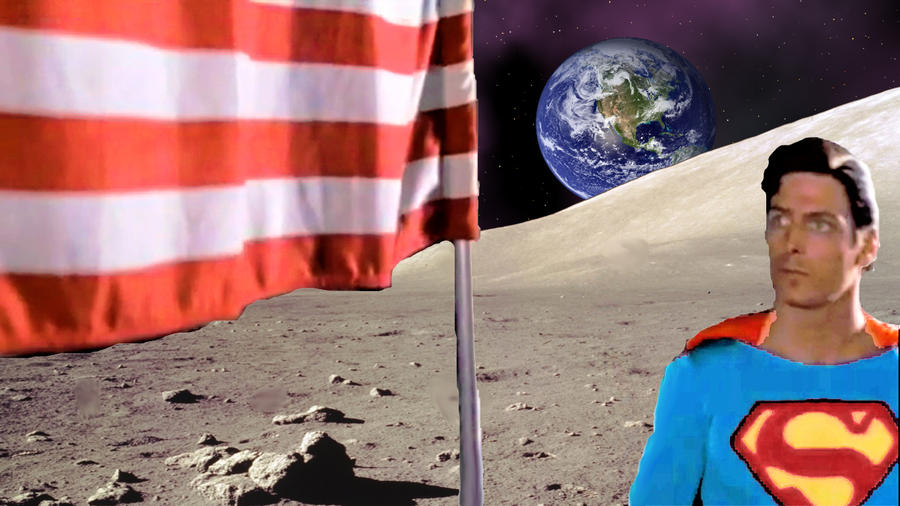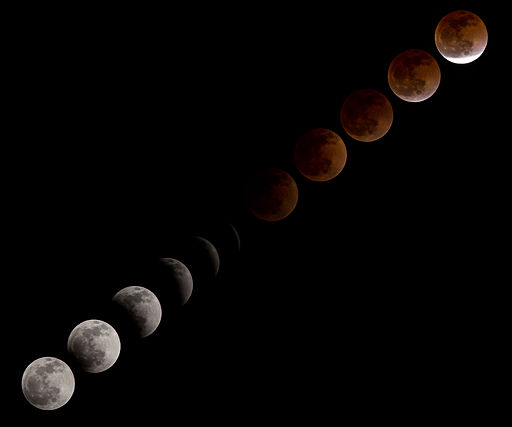 |
| Flickr/ NASA's Marshall Space Flight Center |
By Paola Salazar
Families and friends across the globe were watching the stars and sky Sunday night, whether cozily on porches and balconies, in the streets, at museums or at observatories, for a view they won't get for quite a while--the blood moon super moon! We dare you to say that five times fast.
But among our curios explorers at the Cambridge Science Festival, some may have been wondering--what exactly causes a blood moon, what makes this one a super moon or just generally, what is this big red thing in the sky where our "normal" moon should be?!
Fear not, for we are going to break it down for these curious minds right here, right now.
If we pretend this is an equation, the layout is like this:
Super Moon + Total Lunar Eclipse = Blood Moon Super Moon
But before we get into the nitty gritty details behind that, first we need a briefer on how the moon moves.
The moon and Earth both have elliptical orbits, meaning they move around in a not-quite circular fashion. The Earth revolves around our sun, while the moon completes a revolution around the Earth every 27 or so days.
Now, moving in an elliptical orbit also means that the moon and Earth don't have a set distance between each other. The average distance between the earth and the moon is 384,600 kilometers.
However, the distance varies at two points in particular--the apogee and the perigee. While not exactly the same, this is generally like the shape of an egg--one side is "taller," or further away (the apogee), while the end opposite that is closer to the center, or the "perigee."
 |
| blog.nasa.gov |
The other thing is, the moon doesn't create its own light, it simply reflects the light that hits it from the sun. As the moon changes position around the earth, the side of the moon facing us reflects a different amount of sunlight as the light bounces off the surface of the moon--this is why every month, you can see a difference in what the moon looks like when it's waning, waxing, full and a new moon.
The amount of light and shade of color that we see from the moon depends not only on the postion of the moon, but on the type of rays that hit the moon. This is a form of "filtering" of colors that occurs because of the particles in our atmosphere at the time of night.
Every so often, the alignment of the sun, moon, and Earth, and the type of light that hits the moon during these alignments, result in some really neat tricks that can be visible to the naked eye (although sometimes, we need to wear protective sunglasses to see it).
For example (check out this video!)...
The Super Moon
 |
| source: DeviantArt | Nope, not that kind of Super Moon. |
When the moon is the furthest away from Earth, or in apogee, it's at about 405,600 km away and is the smallest that we can see it, appearing dimmer because of it. For these reasons, when the moon is in apogee, we refer to it as a minimoon.
Total Lunar Eclipse (AKA Why was the moon red?)
 |
| AstroBob.com |
What that means is that when the moon is caught behind the full shadow of the Earth, the moon will still have some reddish rays hit it as they get bent by the Earth's atmosphere, but only those reddish tones because of the "filtering" in our atmosphere, as mentioned above (read here for more).
Or, rather, "You're basically seeing all of the sunrises and sunsets across the world all at once being reflected off the surface of the moon," as Dr. Sarah Noble, a program scientist at NASA, said with the New York Times.
The Blood Moon Super Moon
What made last night's viewing especially awesome for spectators is that while a total lunar eclipse and super moon occur pretty frequently, a super moon that coincides with a blood moon has not occurred since 1982--that's 33 years ago! The next one isn't expected for another 18 years too. That's quite a long time ago, and quite a while until we get to see this again!
Seeing something this unique last night gets people across generations and continents to look back up at the stars with wonder, Dr. Noble suggested, resulting in the birth of the next generations of future astronomers.
Will you be among them?
 |
| NASA/Lauren Harnett/Wikimedia Commons |
Food for Thought:
Ask your older family members if they remember seeing the blood moon super moon back in 1982--what were they doing when they saw it and who did they see it with?
What did you do to see the blood moon super moon last night?
The next one will be in 18 years. What do you think you'll be doing then? How do you think the world might be different 18 years from now?
Paola is a Boston-based science journalist with a background in social and life sciences.

Amazing, although i did not see it in the Netherlands.
ReplyDelete